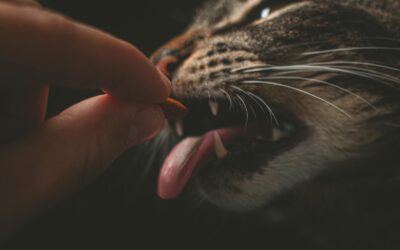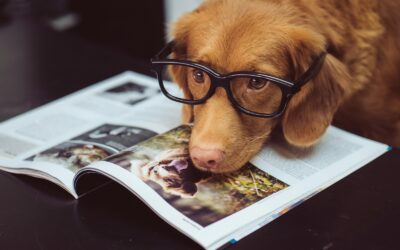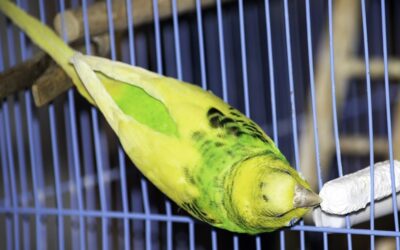Have you ever caught yourself thinking “Why does my dog stare at me?”
Have you ever felt those unblinking eyes on you while you’re trying to enjoy a meal or relax on the couch?
If you’re a dog parent, you probably know this scenario all too well. Many dog owners wonder why their furry friends spend so much time staring at them. Is it love? Is it a request for something? Or could it be a sign of something more serious?
This blog post will help you as a dog owner understand the different reasons behind your dog’s staring behavior. By the end of this read, you’ll have a clear understanding of what those intense stares mean and how to respond to them effectively.
Understanding Canine Body Language
Dogs are incredibly expressive creatures; they communicate through a variety of body language signals. Eye contact is one of the most powerful ways dogs convey their feelings and intentions. While most dogs use a combination of facial expressions, body posture, and vocalizations to express themselves, their eyes are often the most telling of who dogs love.
The Significance of Eye Contact
For dogs, eye contact can mean different things depending on the context. In the wild, wolves—which share a common ancestor with dogs—use eye contact to establish dominance within the pack. Similarly, dogs use eye contact to communicate trust, submission, or aggression. Understanding these nuances can help you interpret why your dog might be staring at you.

Bonding and Social Cues: Why Does My Dog Stare At Me?
One of the most heartwarming reasons your dog might be staring at you is to show affection. Dogs are pack animals, and they use eye contact to bond with their “pack” members—yes, that means you! When your dog looks into your eyes, it releases oxytocin, also known as the “love hormone,” in both of you. This strengthens your bond and makes your dog feel closer to you.
Establishing Hierarchy and Trust
Eye contact also plays a role in establishing hierarchy within a dog’s social structure. In a multi-dog household, you might notice one dog staring at another as a way to assert dominance. With humans, dogs may use eye contact to seek approval or demonstrate submission. For example, if your dog looks at you before eating or going through a door, it’s showing respect and seeking your permission.

The Importance of Your Dog Making Eye Contact With You: Why Does My Dog Stare At Me?
Eye contact is more than just a way for your dog to communicate; it’s a fundamental aspect of building a strong human-canine bond. When your dog makes eye contact with you, it’s fostering a connection that extends beyond words. This interaction elevates the levels of oxytocin in both you and your dog, enriching your emotional bond and enhancing mutual trust. Moreover, eye contact is pivotal for effective training. Dogs that maintain eye contact are more likely to be responsive to commands, as it denotes their attentiveness and willingness to engage with you. By fostering good eye contact, you’re also establishing a foundation of respect and understanding, which is vital for a harmonious relationship. Encouraging eye contact through positive reinforcement helps your dog feel secure and understood, making it a critical component of canine behavioral training and overall well-being.
Seeking Attention or a Need: Why Does My Dog Stare At Me?
Your dog might also stare at you to communicate a specific need or desire. Whether it’s playtime, a bathroom break, or simply wanting attention, dogs often use eye contact to get their message across.
Differentiating Between a Meaningful Dog Stare and a Demanding One
Not all stares are created equal. A loving stare from your dog is usually accompanied by a relaxed body posture and wagging tail. On the other hand, a demanding stare—often seen when your dog wants food or a toy—might be more intense and accompanied by whining or pawing. Learning to differentiate between these types of stares can help you respond appropriately to your dog’s needs.
Behavioral and Health Factors: Why Does My Dog Stare At Me?
Excessive staring can sometimes be a sign of underlying behavioral or health issues. For instance, dogs with canine cognitive dysfunction syndrome (similar to dementia in humans) may exhibit unusual staring behavior. Other potential health issues like vision problems or neurological conditions could also cause your dog to stare more than usual.
When to Seek Veterinary Attention
If you notice your dog staring at you more than usual, accompanied by other symptoms like disorientation, stiffness, or unresponsiveness, it might be time to consult a vet. If you realize your dog is getting enough exercise and their diet is fine, then early diagnosis can help manage any potential health issues and ensure your dog stays happy and healthy.
How to Know if a Dog is Giving You a Vicious Stare or a Bonding Stare: Why Does My Dog Stare At Me?
Understanding the difference between a bonding stare and a vicious stare from your dog is crucial for safety and maintaining a positive relationship. Here are some key indicators to help you differentiate between the two:
Signs of a Bonding Stare
-
Body Language: A bonding stare is usually accompanied by relaxed body language. Your dog’s posture will be loose, and it may show other signs of comfort such as sitting or lying down.
-
Tail Position: A wagging or gently swaying tail is a good indicator that your dog’s stare is affectionate. The tail will be in a neutral or slightly elevated position.
-
Facial Expressions: Soft eyes, relaxed ears, and an open mouth are signs that your dog is happy and content.
-
Context: Consider the situation. If your dog is staring during a cuddle session or while you’re giving it attention, it’s likely an expression of affection.
-
Response to Interaction: When you reciprocate the stare with petting or talking, your dog should respond positively, perhaps by moving closer to you or continuing to wag its tail.
Indicators of a Vicious Stare
-
Tense Body Language: A dog giving a vicious stare will exhibit stiff and rigid body language. Muscles may be tense, and the dog’s movements can be slow and deliberate.
-
Tail Position: The tail may be held high and stiff, sometimes even bristling. In some cases, it may be tucked between the legs if the dog feels threatened.
-
Facial Expressions: Look for signs of stress or aggression such as a wrinkled nose, bared teeth, ears pinned back, or a hard, fixed glare.
-
Growling or Barking: A vicious stare is often accompanied by growling, barking, or snarling. These vocalizations are clear signs of a warning or threat.
-
Context: If the situation involves a resource that the dog might be guarding, such as food, toys, or territory, the stare is more likely to be aggressive. Additionally, if the dog feels cornered or trapped, its stare might be a sign of distress and potential aggression.
What to Do if You Encounter a Vicious Stare
-
Avoid Direct Eye Contact: Direct eye contact can be perceived as a challenge. Look away to show that you are not a threat.
-
Calmly Move Away: Avoid sudden movements and calmly create space between you and the dog. This can help de-escalate the situation.
-
Do Not Punish: Punishing a dog displaying aggressive behavior can escalate the aggression. It’s essential to stay calm and assess the situation.
-
Consult a Professional: If your dog frequently exhibits aggressive staring, it may be beneficial to consult a professional dog trainer or behaviorist. They can help address the underlying issues safely and effectively.
By paying attention to these cues, you can better understand your dog’s emotional state and respond appropriately, whether it’s reciprocating affection or taking steps to ensure safety.

Training and Responding to Staring: Why Does My Dog Stare At Me?
It’s essential to train your dog to use eye contact effectively. Positive reinforcement techniques can help your dog learn to communicate without resorting to excessive staring.
Tips for Responding to Different Types of Staring Behavior
When your dog stares at you, try to identify the underlying reason before reacting. If your dog is staring out of affection, reciprocate with petting or verbal praise. If the stare is demanding, redirect your dog’s attention to something else or use training commands to manage the behavior.
The Importance of Positive Reinforcement
Training your dog with positive reinforcement helps build a strong bond and encourages good behavior. Reward your dog with treats or praise when it uses eye contact appropriately. This will help your dog understand the right way to communicate its needs.
Case Studies and Expert Insights: Why Does My Dog Stare At Me?
Several dog trainers and veterinarians have studied canine staring behavior extensively. Their insights can offer valuable perspectives on why dogs stare and how to manage it effectively. For example, Dr. John Doe, a renowned veterinarian, suggests that understanding your dog’s unique personality is key to interpreting its staring behavior accurately.
Real-Life Examples
Take Oliver, a German Shepherd who would stare intensely at his owner every evening. After observing Oliver’s behavior, it became clear that he was signaling it was time for his evening walk. Once his owner understood this, the staring stopped, and Oliver would happily wait by the door instead.

Conclusion: Why Does My Dog Stare At Me?
Understanding why your dog stares at you can deepen your bond and improve your communication. From expressing love to signaling a need, your dog’s eyes are a window into its world. By paying attention to the context and accompanying body language, you can better respond to your dog’s needs and ensure a happy, healthy relationship.
If you found this guide helpful and want to explore more about your dog’s behavior, consider consulting a professional dog trainer or veterinarian. They can provide personalized advice and tips tailored to your dog’s unique needs.
Kate’s K9 Pet Care is more than happy to get you furry friends out and about while you do what you need to do!







